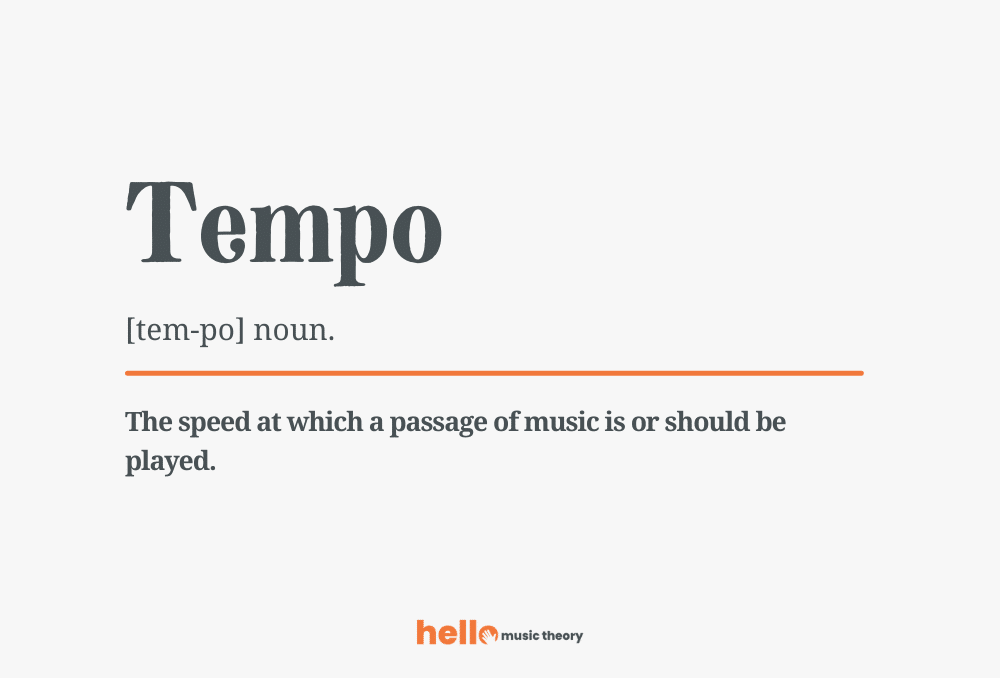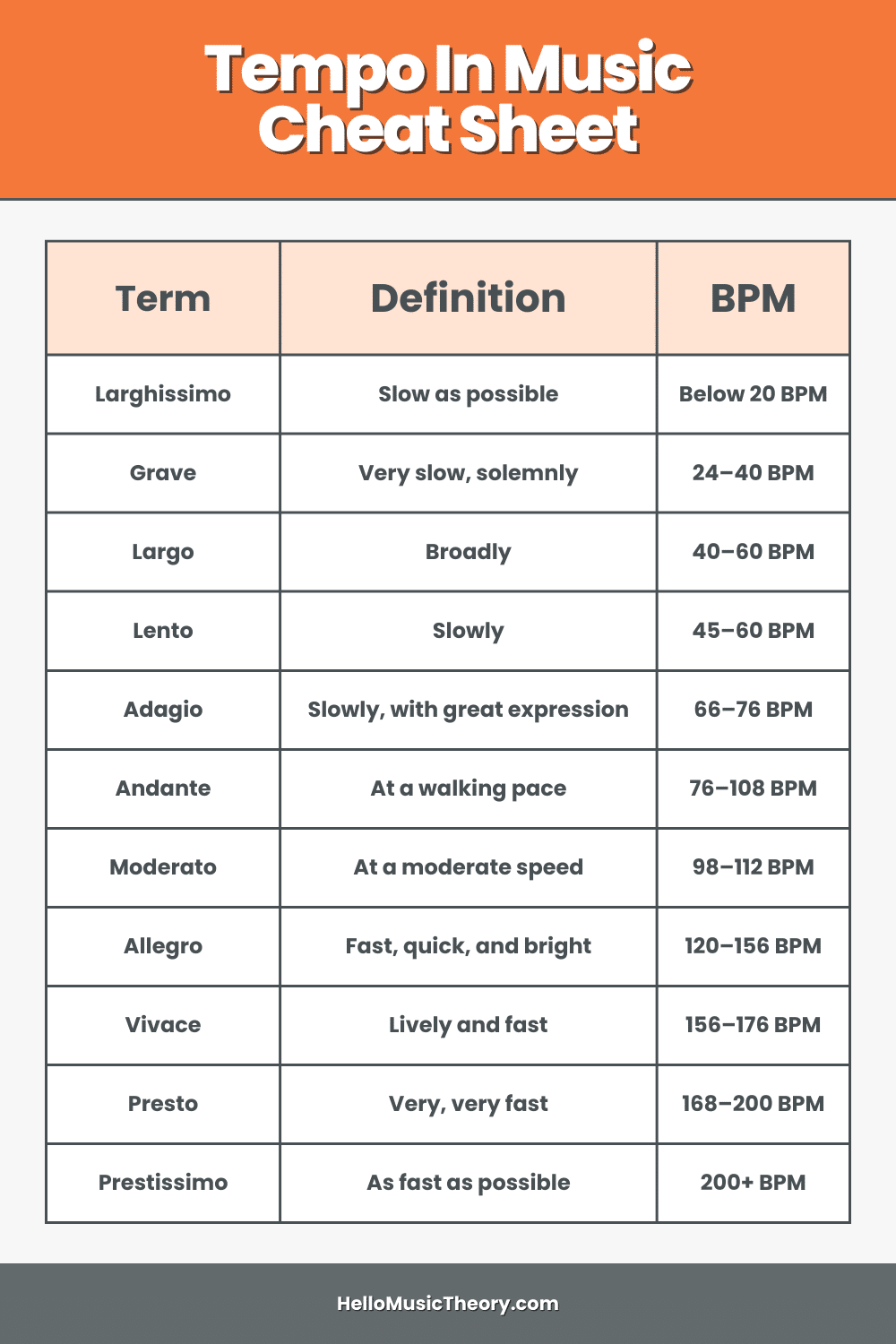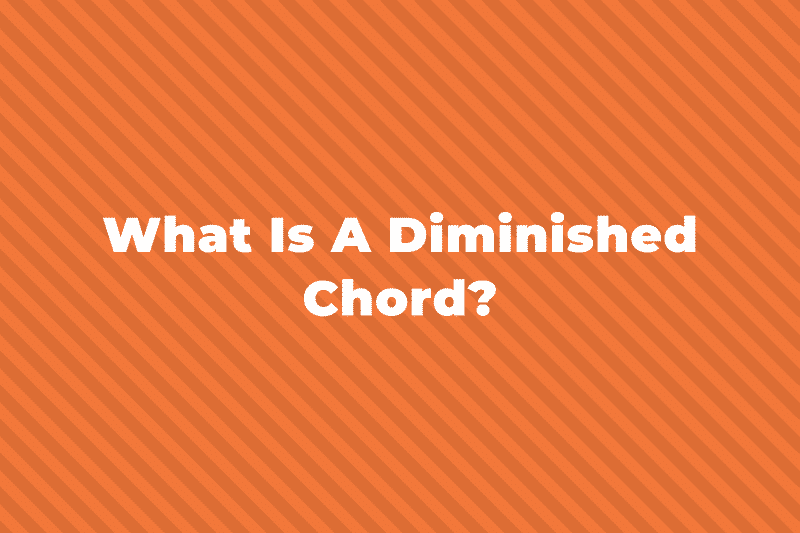Every piece of music you hear has a tempo. On a piece of sheet music, it is almost always found at the top left of the first page, immediately above the beginning of the first stave (or staff) of the piece.
Sometimes, you’ll see it indicated as an instructional word, usually in Italian, German, French, or English, or sometimes as a musical ‘equation’ of sorts. In this post, we’ll learn all about tempo in music.
Definition Of Tempo

In musical lingo, tempo is the word we use to describe the speed at which you play a song.
Should it be played at a fast tempo like the third movement of Vivaldi’s ‘Summer’ Concerto?
Or should it be at a slow tempo like the prelude to Wagner’s opera ‘Lohengrin’?
Was your foot tapping along to the ‘Summer’ piece? If so, your foot usually taps along to the beat or pulse of the music.
The tempo of a piece measures how fast or slow those beats are, using the measurement of Beats Per Minute or BPM for short.
A song with a BPM of 100 means that in the time of a minute on a stopwatch, there would be 100 beats in the song.
To work out the BPM of a piece of music, you can use a metronome, which is a device that clicks at different intervals to help you stay in time and know what a given BPM is.
A faster piece, like Vivaldi’s ‘Summer,’ will have a higher BPM, meaning it can fit more beats of its music within a single minute than a slower piece.
To indicate the BPM of a piece of music, you write it as a note – like a whole note or a half note – followed by a number, as shown below.

This equation tells us that we should play 70 quarter note beats per minute, but you can have any type of note and any number.
Terminology Used to Describe Tempo
Tempo can also be displayed as a musical term instead of a BPM marking.
As we covered earlier, performance directions denoting tempo are in all sorts of languages, but the most commonly used in music theory is probably Italian, so we’ll start with those.
Below is a list of the most popular Italian terms for tempo that you will see in a piece of music, along with their meaning in English and the approximate BPM.
List of Italian Tempo Terms

- Larghissimo – extremely slow (below 20 BPM)
- Grave – very slow, solemnly (24-40 BPM)
- Largo – broadly (40-60 BPM)
- Lento – slowly (45-60 BPM)
- Adagio – slowly, with great expression (66-76 BPM)
- Andante – at a walking pace (76-108 BPM)
- Andantino – slightly faster than andante (80-108 BPM)
- Moderato – at a moderate speed (98-112 BPM)
- Allegro – fast, quickly, and bright (120-156 BPM)
- Vivace – lively and fast (156-176 BPM)
- Presto – very, very fast (168-200 BPM)
List of French and German Tempo Terms
You might also see words in either French or German.
They use different words and their translations may differ slightly by they all generally signify the same thing as the corresponding Italian term.
Here’s a list of the most common French and German terms you might see as a tempo marking.
| German Terms | Definition |
| Kräftig | vigorous or powerful |
| Langsam | slowly |
| Lebhaft | lively (mood) |
| Mäßig | moderately |
| Rasch | quickly |
| Schnell | fast |
| Bewegt | animated, with motion |
| French Terms | Definition |
| Grave | slowly and solemnly |
| Lent | slowly |
| Modéré | at a moderate tempo |
| Rapide | fast |
| Vif | lively |
| Vite | fast |
If you’re going to be taking a music theory exam, you’ll need to learn all these Italian, French, and German terms, along with a number of others.
You can find lists of all the grade 1 terms here, grade 2 terms here, grade 3 terms here, grade 4 terms here, grade 5 terms here.
English Tempo Terms
More modern music, like pop or jazz, uses more contemporary terms, and these are mostly in English.
In order of slowest to fastest, the primary English tempo markings you might come across are:
- Slowly
- Ballad
- Laid back
- Medium
- Steady rock
- Medium-up
- Brisk
- Brightly
- Up
- Fast
Additional Terms
In Italian, French, and German tempo markings, there are some words that mean ‘very’ or ‘somewhat’ or ‘less’ added to the regular tempo marking.
For example, in English, instead of just using the word fast to describe all quick tempos, we could have ‘very fast.’
In Italian, there are the suffixes ‘-etto,’ which means less, and ‘-issimo,’ which means more or very.
Side note: It’s the same ‘-issimo’ we use in dynamics that gives us pianissimo (very quiet) and fortissimo (very loud).
For example, Larghetto means ‘somewhat broadly (60-66 BPM)’, and Prestissimo means ‘even faster than presto (200 BPM and over)’.
In French, those terms are Moins (less) and Très (very). This gives us Moins Vite, which means ‘less fast’, and Très Vif, which means ‘very lively’.
In German, those terms are Etwas (somewhat or a little) and Sehr (very). For example, Etwas Schnell means ‘somewhat fast’, and Sehr Langsam means ‘very slowly’.
Other additional tempo markings you might see are listed below.
| Tempo | Definition |
| A piacere | At pleasure |
| Con moto | ‘With movement’. |
| Assai | (very) much |
| L’istesso | at the same speed |
| Ma non troppo | but not too much |
| Molto | very |
| Poco | a little |
| Subito | suddenly |
| Tempo comodo | at a comfortable (normal) speed |
| Tempo di… | at the speed of a … |
| Tempo giusto | at a consistent speed, in strict tempo |
| Tempo semplice | simple, regular speed, plainly |
Changing Tempo
The last thing to know about the tempo of a piece of music is that it is not a fixed thing – it can change.
Lots of pop music these days is at a fixed tempo, meaning that it begins and ends at the same speed, which is consistent throughout the whole song.
But in lots of other genres of music, tempo is very fluid and will change throughout the piece.
Most classical music symphonies have multiple movements, and each movement starts with a different tempo marking.
For example, Beethoven’s ‘Symphony No. 9 in D Minor’ has four movements, each at a different tempo:
- 1st Movement: Allegro
- 2nd Movement: Vivace
- 3rd Movement: Adagio
- 4th Movement: Presto
But tempo can change within the music without it stopping and starting.
It can speed up (accelerate), or it can slow down (decelerate).
Sometimes, these tempo changes are indicated by the composer, but it can even be at the performer’s discretion to add their own impression and interpretation of the piece.
Below is a list of all the terms that a composer may use to tell the player how to change the tempo.
| Tempo | Definition |
| Accelerando (accel.) | speeding up |
| Allargando | growing broader or decreasing tempo, usually near the end of a piece |
| Doppio più mosso | double-speed |
| Doppio più lento | half-speed |
| Lentando | gradually slowing and softer |
| Meno mosso | less movement; slower |
| Meno moto | less motion |
| Più mosso | more movement; faster |
| Rallentando (rall.) | a gradual slowing down |
| Ritardando (rit.) | slowing down gradually |
| Rubato | ‘Theft’. Free adjustment of tempo for expressive purposes, or to take time from one beat to slow another |
| Tempo Primo | resume the original tempo |
| A tempo | resume previous tempo |
Summing Up
That’s it for tempo! There are a lot of words and in many different languages that we listed above, so don’t worry if you don’t get them all the first time.
After a little while, they’ll become like second nature.
Essentially, think of tempo as the speed at which you tap your foot along to the music, and it is measured in beats per minute.
The faster the tempo marking, the higher the BPM is going to be.
We hope all this has helped!



